
Winter Lawn Care: Top Tips for Protecting Your Lawn
Published: 19/02/2025 | Updated: 19/02/2025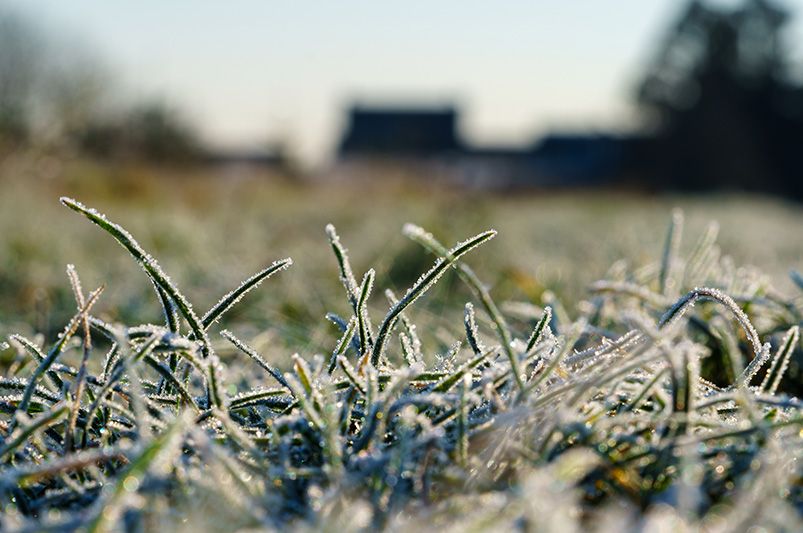
Key Highlights
-
Prepare your lawn for winter with proper fertilization, aeration, and overseeding during the fall.


-
Protect your lawn from frost damage by avoiding foot traffic and using ice-melting products sparingly.
-
Manage snow and ice effectively to prevent damage while also being mindful of potential snow mold development.
-
Adjust your watering schedule and consider mulching to insulate and protect grass roots from extreme temperatures.
-
Properly winterize your lawn equipment, including your lawn mower, garden hoses, and sprinklers, to ensure their longevity.
Introduction
As the first frost comes and we think about cozy sweaters and warm drinks, we might forget about our lawns. But taking care of our lawns in winter is just as important as in spring and summer. Good winter lawn care helps your grass survive the cold months. This care also prepares your lawn to be vibrant and healthy when spring arrives.
Essential Steps to Prepare Your Lawn for Winter
Just like we get our homes ready for cold weather, our lawns need some care to survive the winter months too. By taking a few simple steps, you can help your lawn stay healthy in the spring.
One key task for fall lawn care is the last mowing. Cut your grass a bit shorter than usual. This can help stop matting and keep diseases away. Raking up leaves and debris is also important. If you leave too much organic matter on the lawn, it can smother the grass and attract pests.
The Importance of Fall Fertilization
A key part of fall lawn care is fertilization. Adding a fertilizer that is high in important nutrients like nitrogen, phosphorus, and potassium allows your lawn to store energy for the winter months. This feeds the grass roots and helps them survive the cold weather.
Fall fertilization gives your lawn what it needs to bounce back from hot summer days. It also helps prepare for the tough winter ahead. A strong and well-fed lawn will turn green quickly and fight off diseases in spring much better.
Talk to local lawn care experts to find out which type of fertilizer is best for your grass and the area you live in. It is important to apply the right amount at the right time for the best results.
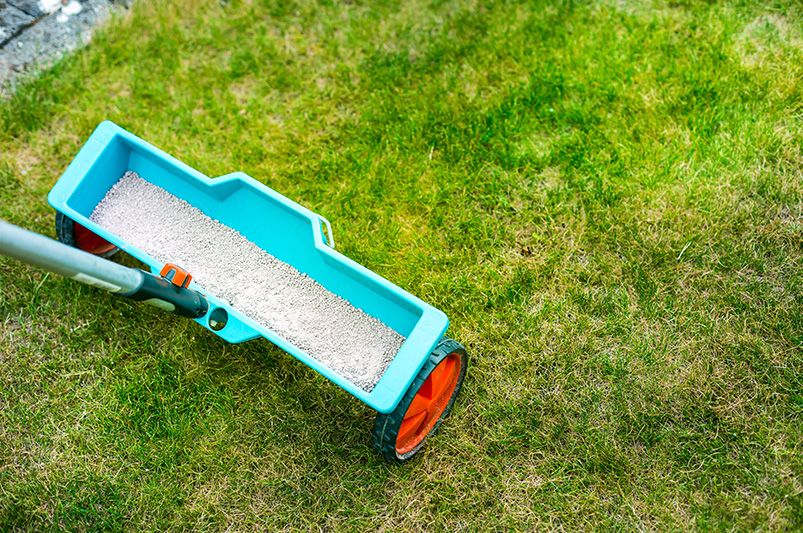
Selecting the Right Grass Seed for Winter Resilience
If you are overseeding your lawn, pick grass seeds that can handle winter well. Cold-season grasses are perfect because they resist cold weather. They can take frost and snow cover better than others. These grasses grow strong roots, which help them absorb nutrients and stay healthy.
When you choose grass seeds, look into the types that do well in your area and climate. Some well-known cold-season grasses are Kentucky bluegrass, perennial ryegrass, and fine fescues.
Make sure to plant the seeds at the right time. This is usually 6-8 weeks before the first frost. This gives the grass enough time to grow strong before winter arrives.
Overcoming Winter Lawn Challenges
Winter can bring many challenges, but if you learn how to avoid risks, you can keep your lawn safe. Understanding problems like frost and pests helps you respond quickly. This way, you can keep your lawn healthy and beautiful all winter long.
Preventing and Managing Frost Damage
Frost occurs often in winter. While light frost isn't a big problem, heavy frost can hurt your lawn’s health. When grass blades freeze, they become brittle. This makes them easy to break, especially if you step on them.
To keep your lawn safe, try not to walk on frosty grass. If you must cross it, use boards or stepping stones. This can help lessen the damage.
Also, when it gets cold, don't leave heavy things on the lawn. Take away any outdoor furniture. This stops dead patches from forming. With a little care, you can help maintain your lawn’s health this winter.
Strategies for Snow and Ice Removal Without Damaging Grass
While snow cover can help keep heat in, too much snow can hurt your lawn. Make sure not to pile snow on it. This can suffocate the grass and lead to problems.
Be careful with ice-melting products. Rock salt is good for melting ice but can harm your lawn if you use too much. Try gentler ice-melting products or use sand on icy walkways for better grip.
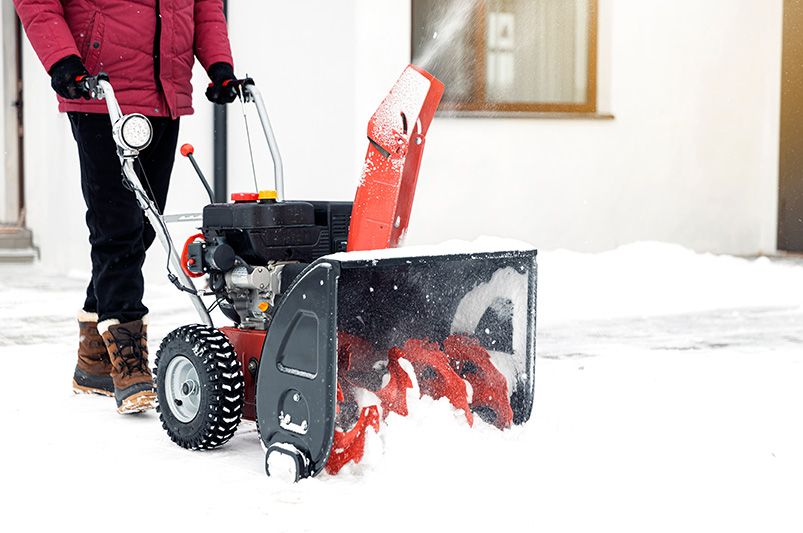
Here are more tips for safely removing snow and ice:
-
Shovel carefully: When you shovel snow, don’t scrape the ground. This can damage the grass.
-
Use a snowblower wisely: Set your snowblower blade a little higher than the grass. This helps protect it.
-
Break up ice dams: If you find ice dams on your roof, remove them carefully. They can cause water to back up and harm your lawn.
Lawn Maintenance Practices for the Cold Months
Just because your lawn grows more slowly in winter doesn't mean you should ignore lawn care. Changing your routine for the colder months helps keep your lawn healthy and less likely to get sick.
It's important to adjust your watering schedule and add essential nutrients. Knowing what your lawn needs is key for its long-term health.
Adjusting Watering Schedules for Winter Needs
During winter, your lawn needs less water because it goes into dormancy. While it is important to water regularly in the growing season, too much water in winter can cause problems like disease, root rot, and compaction.
Keep an eye on the weather. Water only when you need to, usually when the ground isn’t frozen and there’s been little rainfall. A good rule is to water your lawn deeply but not often during the winter months.
The aim is to keep some moisture in the soil without making it soggy. By watching your lawn and thinking about the weather conditions, you can find the best watering schedule.
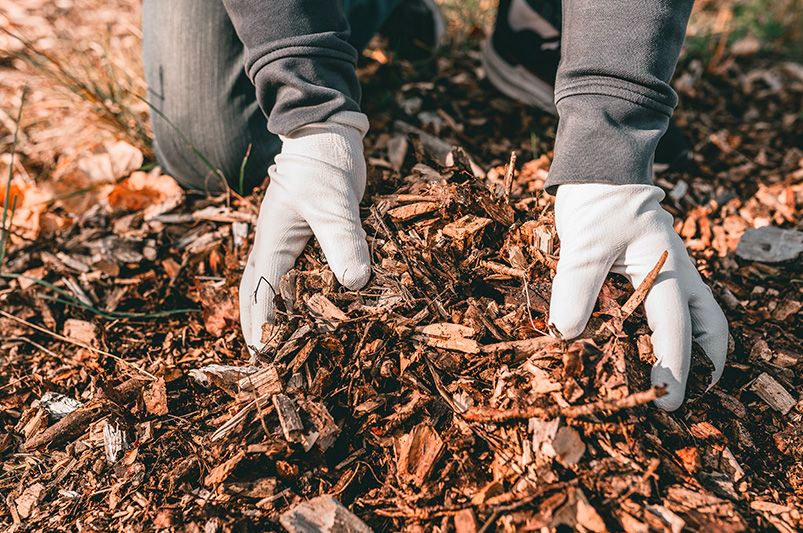
The Role of Mulching in Protecting Lawn Roots
Applying a layer of mulch, like shredded bark or straw, to your lawn can be very helpful in the winter. Mulch works like a blanket. It keeps the grass roots safe from big changes in temperature.
Also, mulch helps keep soil moisture, stopping the ground from drying out due to cold winds. As it breaks down slowly, it adds good nutrients to the soil and helps it get better.
When you put down mulch, don’t make it too thick. Too much can harm the grass. Aim for a layer that is about 2-3 inches deep and spread it evenly over your lawn. Remember, using the right mulch can help your lawn stay healthy and strong during the winter.
Equipment Care and Storage for Winter
While we are getting our homes and cars ready for winter, we should also think about our lawn care equipment. Taking care of your tools and storing them well during their break will help them last longer. It will also make sure they are ready when the next season comes.
Spending time on this important task now can save you both time and money later. Plus, it means you will have the right tools when spring arrives.
Winterizing Your Lawn Mower and Other Tools
Before you store your lawn mower for winter, make sure to clean off any grass clippings and debris from under it. You should also sharpen or replace the mower blades to get a clean cut when you start mowing again.
It’s important to empty the fuel tank or add a fuel stabilizer. This helps stop gum and varnish from building up, which could clog the engine. Also, unplug the spark plug and keep the battery in a cool, dry spot.
Don't forget to winterize your other gardening tools too. Clean off any dirt or debris from shovels, rakes, and hoes. If needed, sharpen their blades and add a light coat of oil to metal parts to keep them from rusting.
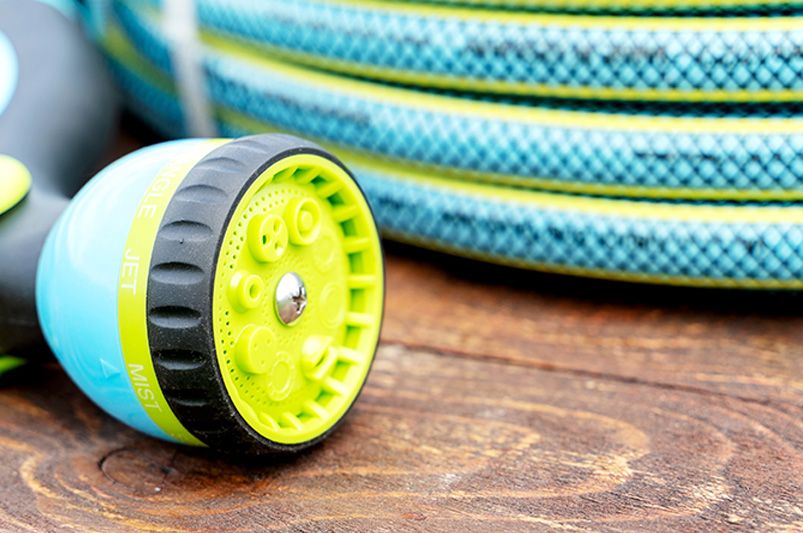
Best Practices for Storing Garden Hoses and Sprinklers
Garden hoses and sprinklers can get damaged if left outside in the cold season. Before the first frost, make sure to disconnect garden hoses from outdoor faucets and drain any leftover water.
Store the hoses in a dry and safe place, like a garage or shed. This helps prevent cracks and keeps them lasting longer.
If you have in-ground sprinkler systems, it is important to winterize them to stop freezing and damage. It’s a good idea to ask a professional for advice on winterization. They can help with removing extra water from the lines.
Conclusion
Proper care for your lawn in winter is very important. It helps keep your lawn healthy and green in spring. By following the steps to prepare and protect your lawn in the cold months, you will help it stay strong against winter problems. Key actions include:
-
Fertilizing your lawn in fall.
-
Having a plan for removing snow.
-
Changing how and when you water your lawn.
-
Using mulch to help keep it warm.
-
Taking good care of your tools.
Staying active in your lawn care will help avoid damage. It will also get your yard ready for a beautiful look when warmer days come. Share these simple tips on social media. They can help others care for their winter lawns too.
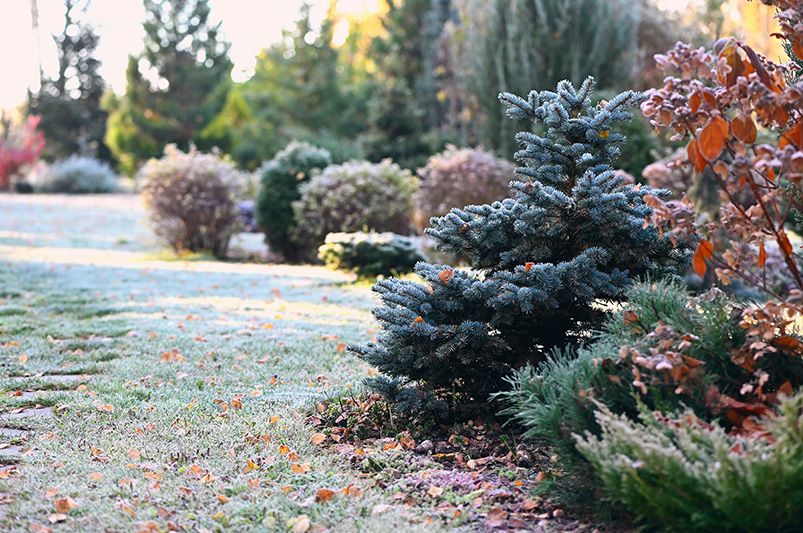
Frequently Asked Questions
How often should I water my lawn in winter?
In winter, cut back on how much you water your lawn. Only water it when the ground isn't frozen and there's not much rain. Try to keep it a little moist by watering deeply, but do it less often.
Can I fertilize my lawn in winter?
Fertilizing your lawn in winter is usually not a good idea. Most lawns are inactive during this season. They do not use essential nutrients well when they are dormant. It is better to do fertilization in the fall.
Is it necessary to mow the lawn during winter?
Avoid cutting your lawn in winter. Grass goes to sleep in cold temperatures and does not need mowing. Letting tall grass grow can cause it to mat and increase the chance of winter kill and diseases.
How can I protect my lawn from frost damage?
To reduce frost damage, don't walk on grass covered in frost. If you must walk on it, use boards or stepping stones. These will help spread out your weight and stop the grass blades from breaking. This will also lower the chance of lawn disease.
What steps should I take if my lawn is damaged by snow mold?
If you see snow mold damage, gently rake the affected spots. This helps with air flow. Stay off the lawn while it heals. If the damage is bad, you may need to reseed those areas in spring. It’s a good idea to talk to a lawn care expert about dealing with this fungal lawn disease.
Need Assistance for a Complete Landscape Makeover?
Shrubhub’s landscape design packages can significantly transform the lives of homeowners by delivering customized, professional landscaping plans tailored to their unique space and personal style. With the ease of online collaboration, you are guided step-by-step through a design process that fundamentally reshapes your outdoor environment. The result is an aesthetically pleasing and functional outdoor living area that maximizes the potential of your property.


